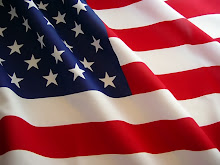
For seventeen years Steve McCurry searched for the girl that captivated the western world with eyes that were “haunted and haunting, and in them you can read the tragedy of a land drained by war.” McCurry attempted to find this woman several times after the photograph was taken including several attempts in the nineties when the Taliban was in power. Unfortunately these endeavors ended in failure as he was limited by his ability to travel through the region during the time. However after the September 11 attacks in New York and the subsequent invasion of Afghanistan in the War of Terror, there was a large increase in interest for the girl who had been photographed in the 1980’s.
The interest for the woman in the photo stems not only from the fact that her eyes and face became a sort of spokes person for the war in Afghanistan in the eighties but also from the fact that nothing about her was known. McCurry says that when the photo was taken he didn’t expect it to stand out from any of the photos he had taken that day, photos he took while documenting life for refugees in a refugee camp in Pakistan. That is why he never bothered to ask for her name, about her family, about her life.
Yet could there be another explanation for the western media’s fascination for this woman? There is no doubt that the photo itself warrants attention, it is after all a very good photo of a young girl with strong piercing eyes. However, if this image had been of a boy with strikingly green eyes, would it have been able to garner the amount of attention and interest that this young girl did? What if the girl would have had brown eyes? There is the distinct possibility that the western medias interest also stems from our often-misplaced desire to save Muslim women.
According to Lila Abu-Lughod the history of saving Muslim women extends far back into the eras of colonialism. In India, the examples Abu-Lughod uses are the of interventions of Sati, in the Middle East and Arab regions she cites Englishman that opposed veiling and saw it as a form of oppression (while opposing women’s suffrage at home.)
The idea of saving Muslim women became central again with the current military campaigns that the United States is waging in Afghanistan and Iraq. After the invasion of Afghanistan Laura Bush, wife of then president George W. Bush, made a radio address to the nation in which she stressed the importance and impact the war had on the lives of Afghani women. While the invasion may have been justified by the attacks of September 11 alone (not to mention U.N. support), the radio address by Laura Bush added another element in support of the war. The speech was problematic because it approached the issue that women face under the scope of cultural relativism. That is, there was a concern for these women that intended to free them from the oppression imposed upon them by men and laws from the Taliban. It made those issues the primary ones while also mixing in other more important ones into the mix such as malnutrition, poverty, and poor health, issues that had had nothing to do with the Taliban. The issue in essence became one of “white men needing to save brown women from men.”

